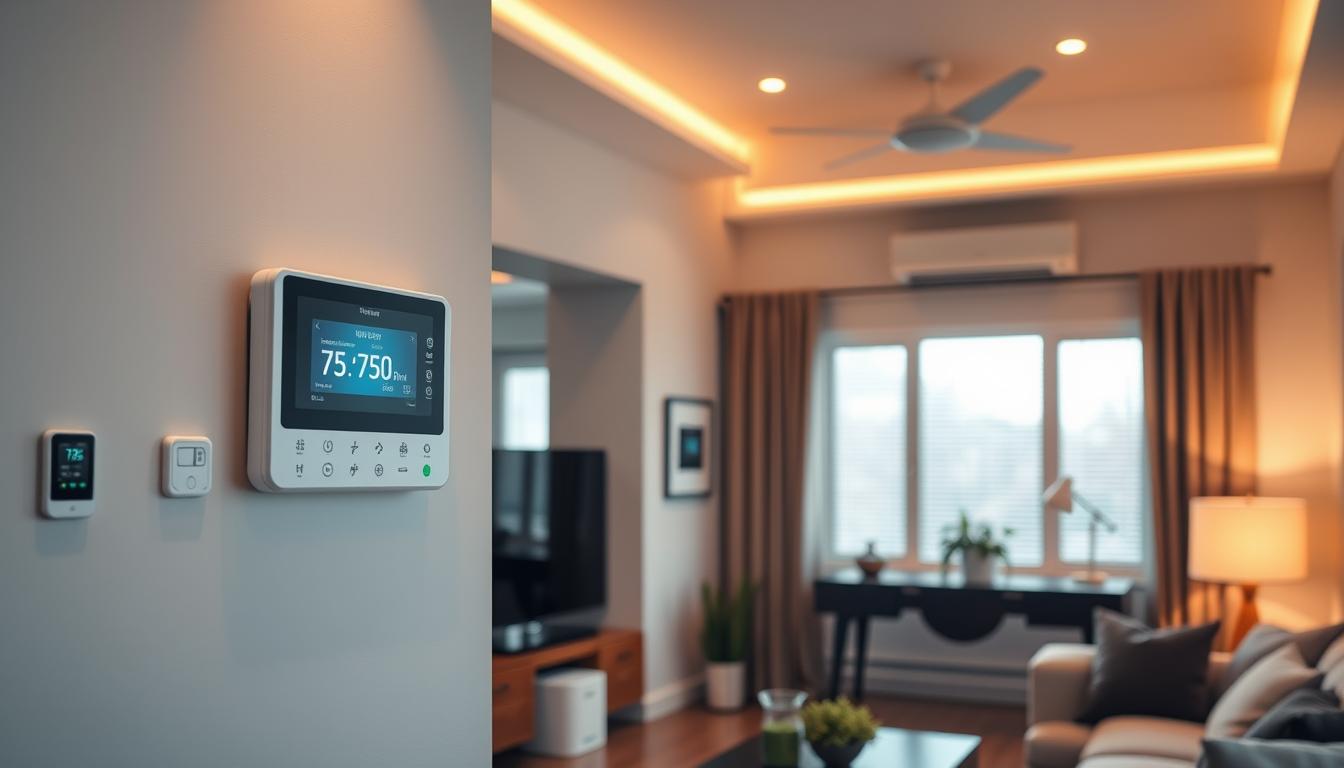I recently discovered the benefits of automating HVAC systems and decided to take the plunge. By investing in HVAC automation solutions, I was able to transform my home’s efficiency and lower my monthly energy expenses. In this article, I will share my personal experience with automating HVAC systems and provide a step-by-step guide on how to do it.
Automating HVAC systems can be a game-changer for homeowners looking to reduce their energy consumption and save money. With the right HVAC automation solutions, you can optimize your heating and cooling usage, reducing waste and minimizing your environmental footprint.
Through my journey of automating my HVAC system, I learned about the various benefits of HVAC automation solutions, including increased comfort, convenience, and energy efficiency. I will share my findings and provide tips on how to choose the right automation system for your needs, making it easier for you to start enjoying the benefits of automating HVAC systems.
Why I Decided to Automate My HVAC System
I wanted to cut down on energy use and make my home more comfortable. I looked into Smart HVAC control. It seemed like a smart way to manage my heating and cooling without losing comfort.
Automation offered many benefits. It promised better energy use, more comfort, and less harm to the environment. Key advantages included:
- Remote access and control of my HVAC system
- Automated temperature adjustments based on my schedule and preferences
- Real-time energy usage monitoring and alerts
- Integration with other smart home devices for seamless control
By choosing an Automated heating and cooling system, I aimed for a better living space. Smart HVAC control helped me keep a nice indoor climate. It also cut down on energy use and carbon footprint.
Understanding HVAC Automation Technology
To understand the benefits of HVAC automation, it’s key to know the technology behind it. Energy-efficient HVAC automation uses advanced tech to control and monitor your heating, ventilation, and air conditioning systems. This tech allows for smart thermostat integration, which boosts your HVAC system’s performance and cuts down energy use.
The heart of energy-efficient HVAC automation is its ability to learn and adjust to your schedule and preferences. With smart thermostats, you can control your HVAC system from anywhere, set temperature changes, and keep an eye on your energy use. This control and monitoring help you make smart choices about your energy use and cut down on waste.
Some important parts of an automated HVAC system include:
- Sensors to check temperature, humidity, and air quality
- Smart thermostats to manage and adjust temperature
- Automation controllers to tie everything together
- Remote access for monitoring and control
Knowing how these parts work together helps you see the benefits of energy-efficient HVAC automation and smart thermostat integration. This knowledge lets you make smart choices about automating your HVAC system and improving its performance.
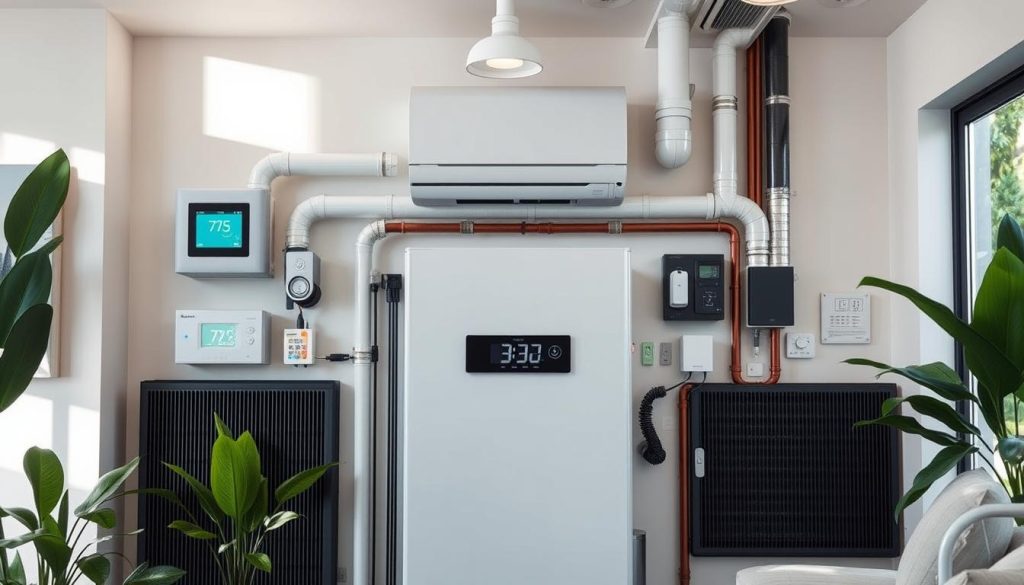
Choosing the Right Automation System
Choosing the right automation system can be tough. It’s important to research, compare, and ask for expert advice. Think about building automation and HVAC system optimization when making your choice.
When looking at options, consider these points:
- Energy efficiency
- Cost savings
- Ease of use
- Compatibility with existing systems
It’s also key to compare features and prices. Look for systems with remote access, scheduling, and energy monitoring. HVAC system optimization is crucial for efficiency. By focusing on these, you can find a system that fits your needs and saves money in the long run.
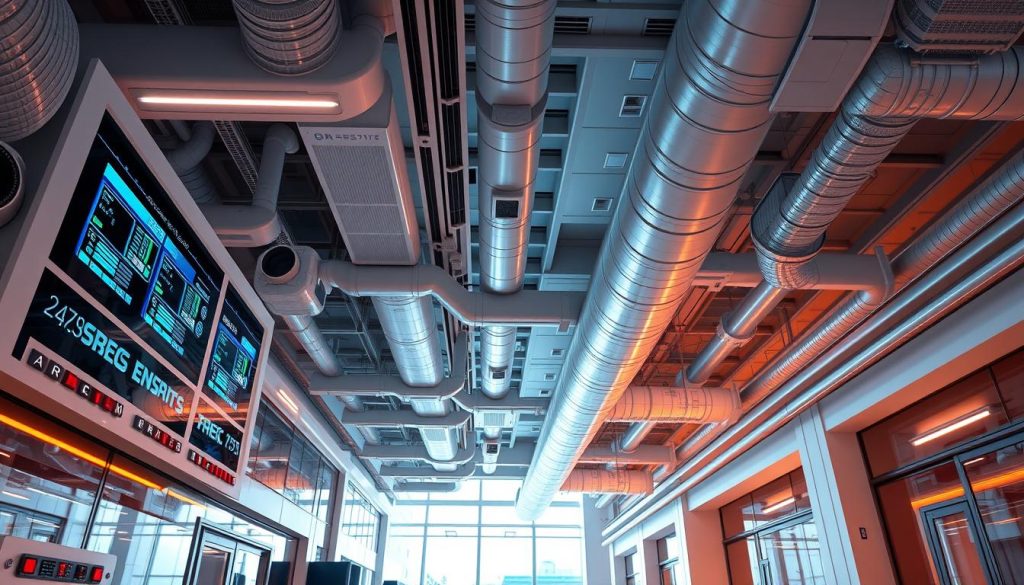
Getting advice from HVAC pros or energy auditors is also smart. They can offer insights and help you pick the best system. By doing your homework and comparing, you’ll find a system that boosts energy efficiency and saves money.
| Automation System | Features | Price |
|---|---|---|
| System A | Energy monitoring, scheduling, remote access | $1,000 |
| System B | Energy efficiency, compatibility with existing systems | $1,500 |
| System C | Advanced features, HVAC system optimization | $2,000 |
How I Installed My HVAC Automation System
Installing an HVAC automation system might seem hard, but it’s not. With some guidance, you can make your home more comfortable and energy-efficient. I chose to have a pro install mine because it needed special skills and tools.
First, we checked my home’s HVAC system and found the best spots for automation. We looked at the ductwork, vents, and thermostats. This helped my system work better and save energy.
Step-by-Step Installation Process
The installation had several important steps:
- Disconnecting the power supply to the HVAC system
- Installing new sensors and thermostats
- Configuring the automation system and integrating it with my existing infrastructure
- Testing the system to ensure it was working correctly
I was really impressed with how easy and flexible the system was. This technology made my home more comfortable and energy-efficient.
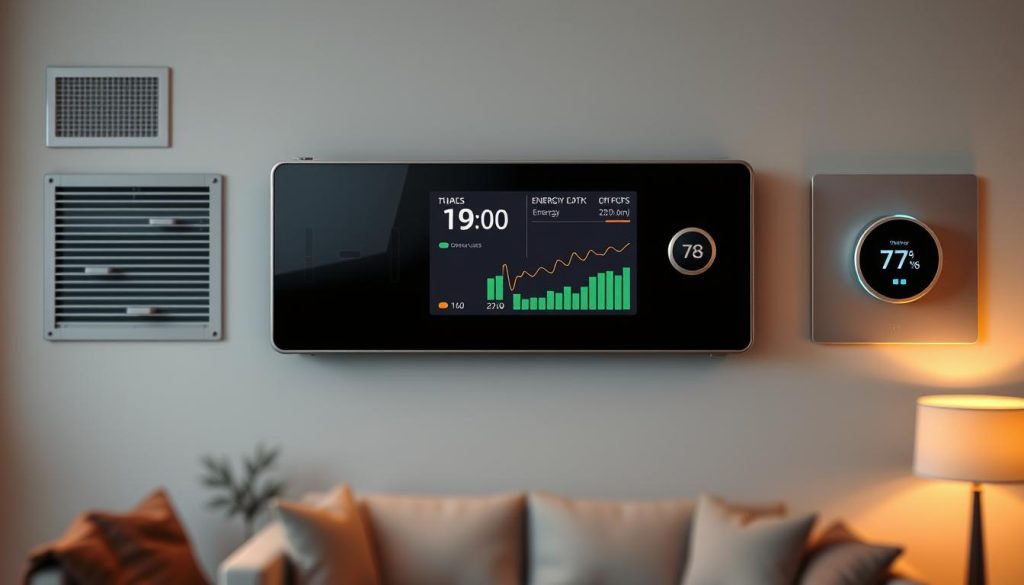
Integrating Smart Thermostats
Smart thermostats are key in automating HVAC systems. They help improve performance and save energy. Homeowners get a more comfortable and efficient living space. Let’s look at the benefits and how to set them up.
Smart thermostats offer many perks like remote control and scheduling. They also track energy use. This means you can save on bills and control your HVAC system from anywhere.
Benefits of Smart Thermostats
- Energy efficiency: Smart thermostats learn your schedule and preferences to optimize heating and cooling.
- Convenience: Control your thermostat remotely using a smartphone app.
- Cost savings: Reduce energy consumption and lower your utility bills.
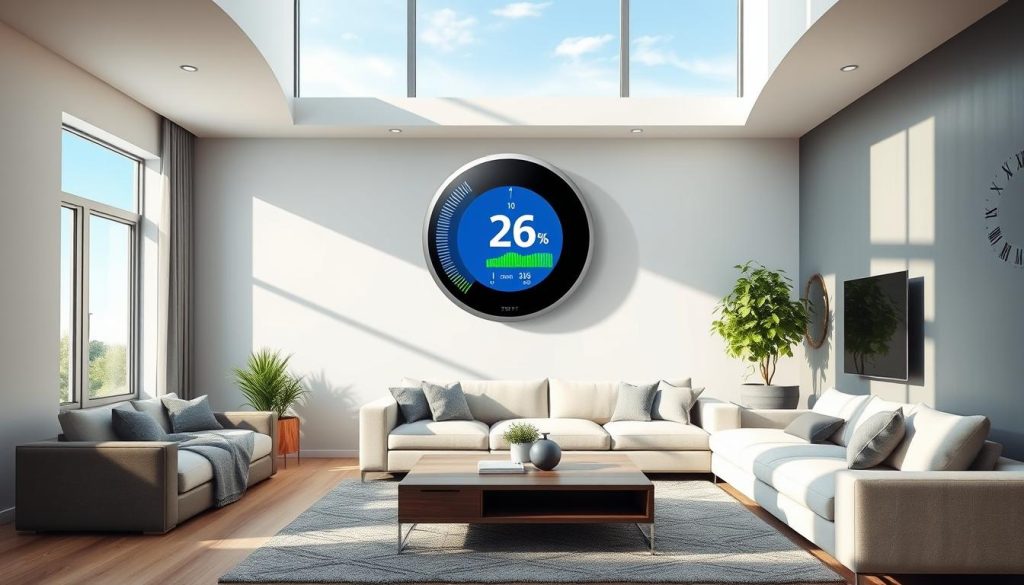
How To Set Up Your Smart Thermostat
Setting up a smart thermostat is easy. First, connect it to your Wi-Fi. Then, download and install the app. Follow the app’s instructions to set it up. Soon, you’ll control your HVAC system from anywhere, making your home more comfortable and energy-efficient.
Monitoring Energy Usage
Enjoying my Energy-efficient HVAC automation system has shown me how key it is to watch energy use. By tracking how much energy I use, I can spot ways to use less. Building automation technologies help me make smart choices based on data.
To keep an eye on energy use, I use smart thermostats and energy tracking software. These tools give me live updates on my energy use. This lets me see how I’m doing and find ways to do better. I look for tools with these features:
- Real-time energy usage tracking
- Historical energy usage data
- Personalized energy usage recommendations
- Integration with my Energy-efficient HVAC automation system
Using these tools and technologies has helped me cut down on energy use and lower my bills. The numbers show the success, as seen in the table below:
| Month | Energy Consumption (kWh) | Cost Savings |
|---|---|---|
| January | 1000 | 10% |
| February | 950 | 12% |
| March | 900 | 15% |
Customizing Settings to Fit My Lifestyle
I learned how crucial it is to tailor my automated HVAC system to my lifestyle. I set up schedules for temperature changes. This made sure my home was cozy, whether I was resting, working, or having guests over. It helped me save energy and optimize my system.
Remote temperature control was a game-changer for me. I could adjust my home’s temperature from my phone or tablet. This feature, called remote access, gave me more control over my HVAC. It’s a big plus of automated climate control.
- Increased convenience and flexibility
- Improved energy efficiency
- Enhanced comfort and control
Customizing my HVAC and using remote access made my home more comfortable and energy-smart. I highly recommend investing in an automated climate control system. It’s a smart move for saving energy and money.
Maintaining My Automated HVAC System
To keep my automated HVAC system running smoothly, regular maintenance is key. I spend time on routine checks to prevent problems and ensure top performance. This is crucial for IoT-enabled systems, which use advanced tech to work better.
Automating HVAC systems cuts down on manual upkeep. Yet, it’s vital to keep an eye on the system often.
Some important maintenance tasks include:
- Checking air filters monthly and replacing them as needed
- Inspecting ducts for leaks and damage
- Verifying thermostat settings to ensure they’re aligned with my schedule
By doing these tasks, I extend my system’s life and avoid expensive fixes. IoT-enabled systems also offer real-time monitoring and alerts. This makes it easier to spot and fix problems early.
Routine Maintenance Tips
Regular maintenance stops common issues like overheating or poor cooling. By sticking to a maintenance schedule, I keep my system efficient and effective. This saves me money on energy and reduces the chance of system failure.
Troubleshooting Common Issues
When a problem arises, quick troubleshooting is crucial to avoid more damage. With IoT-enabled systems, I can access real-time data to find the problem’s source. Fixing issues fast keeps my system running smoothly.
The Financial Impact of My Automation
After setting up my HVAC automation system, I saw a big drop in my energy bills. The smart thermostat and HVAC automation were key in cutting down energy use. By adjusting temperatures and schedules smartly, I saved a lot on my monthly bills.
The savings on energy bills were clear right away, with a big drop in what I spent. This was thanks to my HVAC system running only when needed. The long-term benefits of automation will also be huge, as it keeps saving energy over time.
Some of the main benefits of my system include:
- Less energy use thanks to smart thermostats
- Smart temperature and schedule settings
- More comfort and ease with remote access
- Big savings on energy bills in the long run
My energy bills have gone down by about 20% since I got the system. This means big savings each year. The automation also gave me insights into my energy use, helping me fine-tune my system further.
The financial benefits of my automation have been huge. By getting a smart thermostat and HVAC automation, I cut my energy use and bills. I’m looking forward to more savings in the future, making this a smart choice for my home and wallet.
| Month | Energy Bill (Before Automation) | Energy Bill (After Automation) | Savings |
|---|---|---|---|
| January | $150 | $120 | $30 |
| February | $160 | $130 | $30 |
| March | $170 | $140 | $30 |
Reflecting on My Automation Journey
Looking back, I feel proud and thankful for automating my HVAC system. It wasn’t easy, but the benefits are huge. Choosing and setting up the right systems was a challenge, but it was worth it.
What I Learned from the Process
I learned how crucial smart HVAC control is. It helped me save a lot on my bills. I also see how technology makes my home more efficient and cozy.
Recommendations for Others Considering Automation
If you’re thinking about automating your HVAC, do your homework. Ask people you trust for advice. The right tech can save you money and make your home better. Start now and see how it changes your home.

